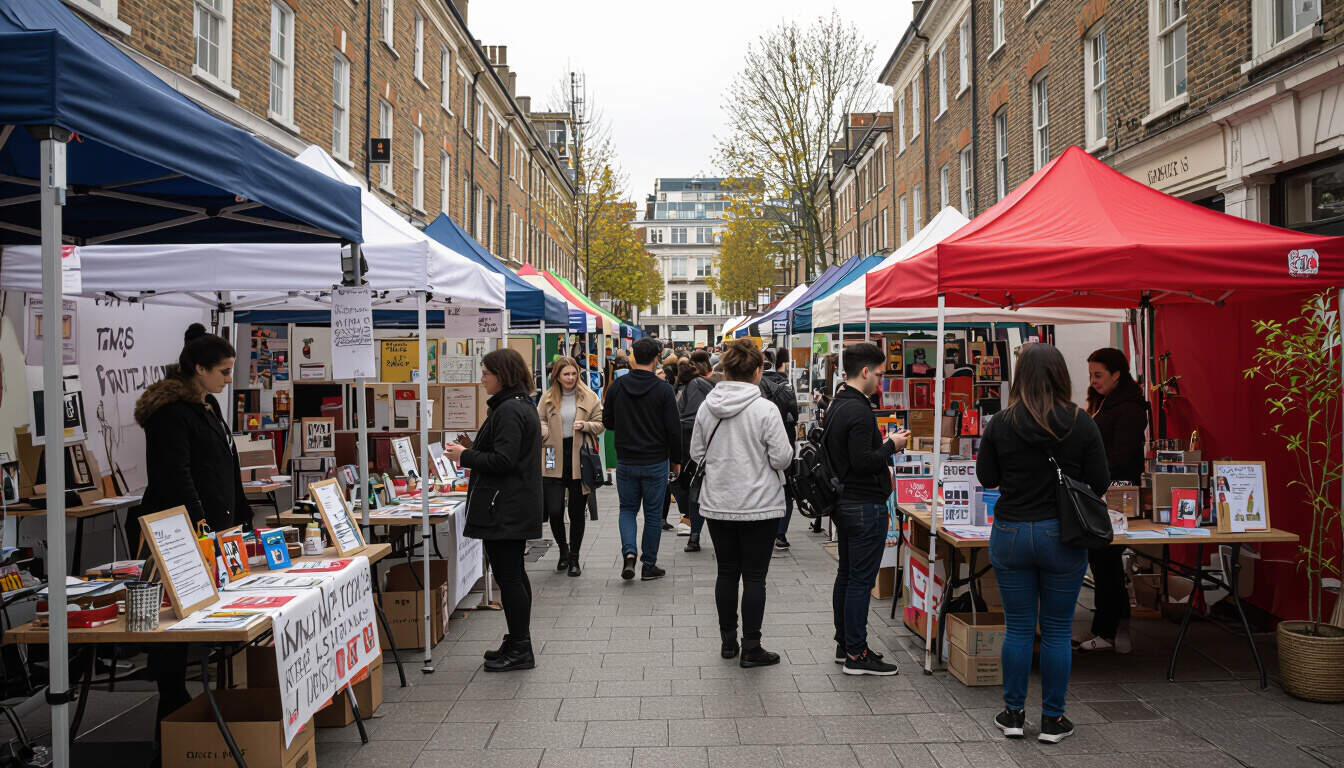Guerrilla PR Tactics Through Small Business Pop-Up Markets
 by Verner Mayer
by Verner Mayer
Discover how small businesses can use pop-up markets for innovative PR strategies. This approach helps build brand visibility and customer connections in niche sectors, offering cost-effective ways to stand out and drive growth.

Small business pop-up markets offer a fresh way for entrepreneurs to connect with audiences and promote their brands. These events create immediate buzz and foster direct interactions that traditional advertising often misses.
In the content of PR, pop-up markets serve as a creative tool for gaining attention. They allow businesses to showcase products in unexpected places, drawing in passersby and potential customers. For instance, a local artisan might set up a stall in a busy neighborhood, turning a simple display into a memorable experience.
One key advantage is the ability to target niche audiences effectively. Pop-up markets let owners focus on specific communities, such as eco-conscious consumers or tech enthusiasts. This targeted approach builds loyalty and generates word-of-mouth promotion without high costs.
To get started, businesses need to plan their events carefully. First, choose a location that aligns with the brand's identity, like a community fair for handmade goods. Next, prepare engaging displays that highlight unique features. Interactive elements, such as product demos, can make the setup more appealing and encourage participation.
Building Excitement Around Events
Creating anticipation is essential for success. Businesses can use social media to tease upcoming pop-up markets, sharing sneak peeks of offerings to spark interest. This strategy helps gather a crowd and amplifies reach through shares and tags.
Another tactic involves partnering with complementary brands. For example, a coffee shop might collaborate with a book seller at the same event, cross-promoting to broader audiences. Such alliances expand visibility and create a vibrant atmosphere that attracts more visitors.
Measuring outcomes is also important. Track attendance, sales, and feedback to refine future efforts. Simple tools like sign-up sheets or online surveys provide valuable insights into what works best.
Overcoming Common Challenges
While pop-up markets are effective, they come with obstacles. Limited space can be an issue, so prioritize essential items and keep setups compact. Weather conditions might affect outdoor events, making indoor alternatives a smart backup plan.
Budget constraints are another factor. Small business owners can keep costs low by using existing inventory and free promotion channels. The key is to focus on creativity rather than expensive materials.
Real examples show the impact of these tactics. A craft brewery once hosted a pop-up in a local park, offering samples and live music. This not only boosted sales but also led to ongoing customer relationships through follow-up emails.
Innovative Ideas for Engagement
To stand out, incorporate unique twists. Themed events, like a holiday pop-up with seasonal decor, can draw in crowds and create photo opportunities. Encouraging user-generated content, such as customers sharing their experiences online, extends the event's reach.
Networking plays a role too. Use these markets to connect with influencers or local media, turning casual interactions into feature stories. This organic publicity builds credibility and drives long-term growth.
For follow-up, maintain momentum by sending thank-you notes or exclusive offers to attendees. This keeps the brand top of mind and encourages repeat visits.
In summary, pop-up markets provide a practical avenue for guerrilla PR. They enable small business owners to innovate and engage directly with their markets, fostering sustainable brand development.
Tips for Effective Implementation
- Select dates and times that match peak customer activity.
- Prepare clear messaging that conveys the brand's story.
- Gather materials in advance to ensure smooth execution.
- Evaluate results promptly to inform the next event.
By applying these strategies, entrepreneurs can turn pop-up markets into powerful tools for growth, creating lasting impressions in competitive niches.
